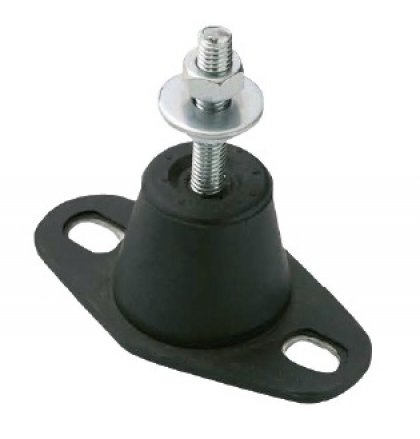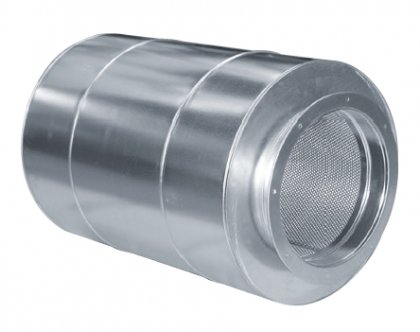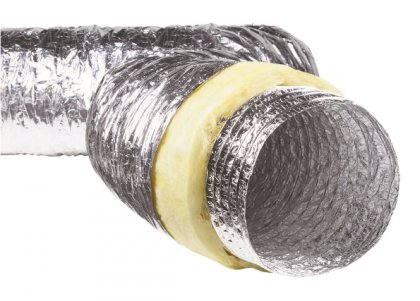The causes of noise in air handling equipment are often difficult to identify in practice, as they can have a number of causes and components that add up in their effect. A practical guide to source identification can be found in the following text. Noise parameters are generally reported by equipment manufacturers as sound pressure LpA (dB(A)), at a distance of 1 m from the source, in the free field, with a weighting filter A. Noise sources are generally:
- Recuperative unit - emits 30-50 dB(A) to the surroundings (depending on the degree of rotation), 30-70 dB(A) to the ductwork. Therefore, it is preferable to locate the unit away from living rooms. The noise decreases with the length of the pipe and the number of fittings or bends. The noise of the fans in the unit increases with flow rate and external pressure (sound power Lw = 20 + 10 log V + 25 log dp).
- Aerodynamic duct noise- depends on duct cross section (S) and flow velocity (w), Lw = 10 + 10 log w5 + 10 log S. From the above, it can be seen that velocity is in the fifth power and affects the result the most. The velocity decreases with increasing cross section, the recommended velocity is 2-3 m/s. At higher velocities, the sound power values in the duct can be 40-50 dB when including the noise from the arches (Lw = 62 log w + 10 log S).
- Noise of distribution elements (disc valves) - varies depending on speed or flow rate 25-35 dB(A). Noise decreases with speed and flow rate.
- Location of distribution elements - often in inappropriate locations. The directional factor of a plate valve in the corner of a room Q = 8 will cause a 9 dB increase at low frequencies where it acts as a zero order radiator.
- Noise excited by unit vibration - propagates through the building structure (nodes and oscillations of varying amplitude can be measured in rooms with a sound meter). It is necessary to use silent blocks, e.g. KSE.
Practical recommendations:
- Place the unit in a utility room with low air permeability walls, use a TAA damper for fresh air discharge (unless the duct is made entirely of SONOFLEX)
- Choose larger cross-section ducts with low velocity, duct can be all SONOFLEX)
- Distribution elements (plate valves) should be larger, with a lower distribution velocity (Lw is proportional to 60 log w), if the noise emission is highest in the octaves 500 Hz, 1000 Hz, 2000 Hz, SGD 100 and SGD 125 inlet silencers with an insertion loss of 15 to 20 dB can be used.
- A sound meter with an octave filter can detect noise sources and then eliminate them.
- If the "hum" evaluated by the sound meter is at a level of about 28-35 dB(A), measured 1 m from the plate valve, and the rooms are not reflective (equipped with carpets, curtains, chairs, beds, etc.), most likely everything is perfectly fine. With increasing distance from the source in the open field the noise decreases (1 m approx. -11 dB, 2 m -17 dB, 3 m -20 dB ...). If the room is reflective (parquet floor, bare walls ...), the sound pressure values can be tentatively calculated from the sound power using Sabin's formula.
- Even such sound pressure can be unbearable at night when not masked by the background. Then the unit must be switched to the lowest speed.
- The system can be tuned with the help of noise specialists (specialist companies).




